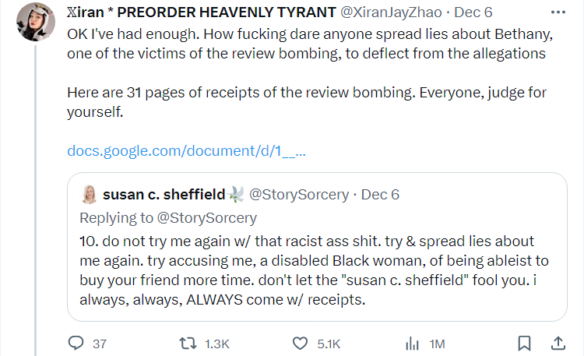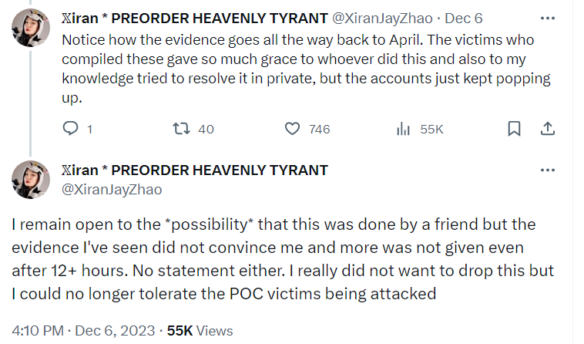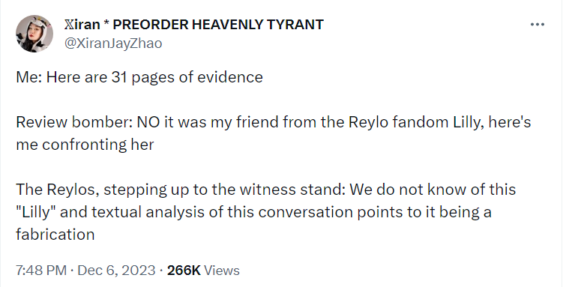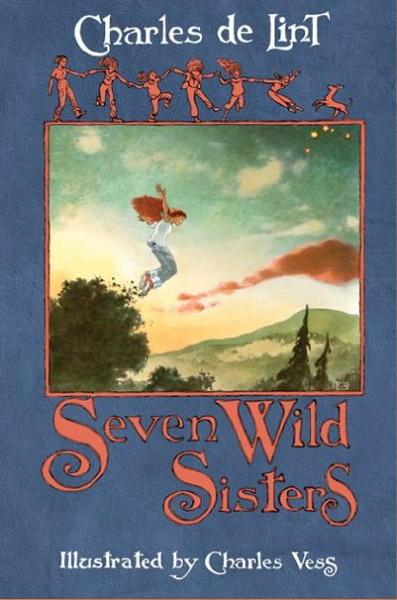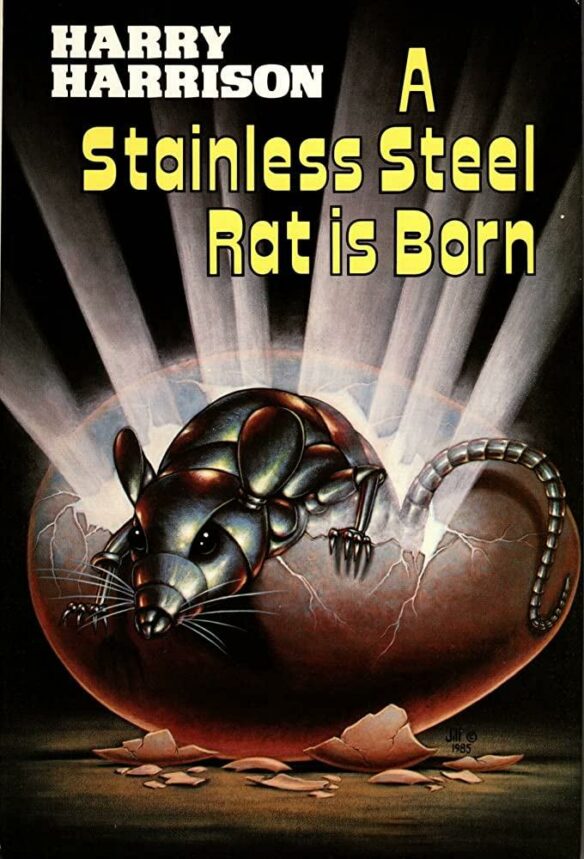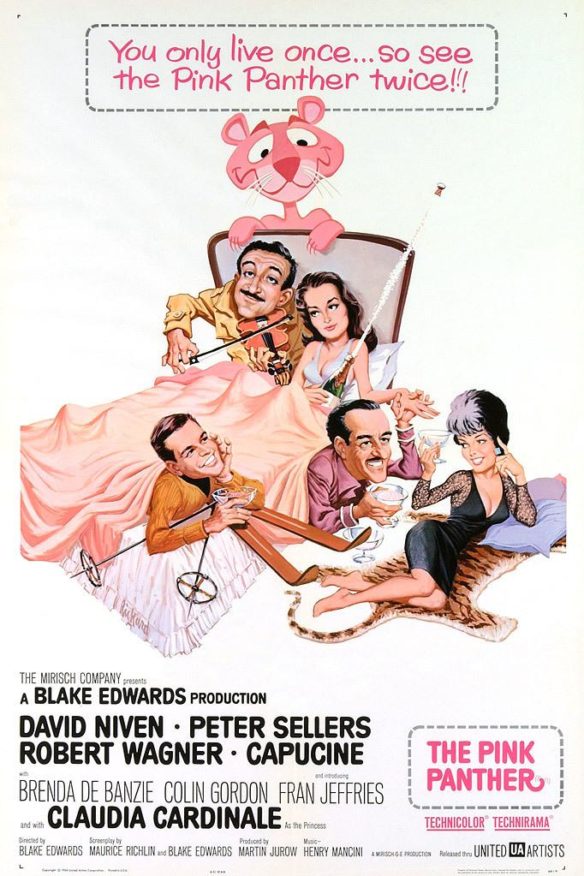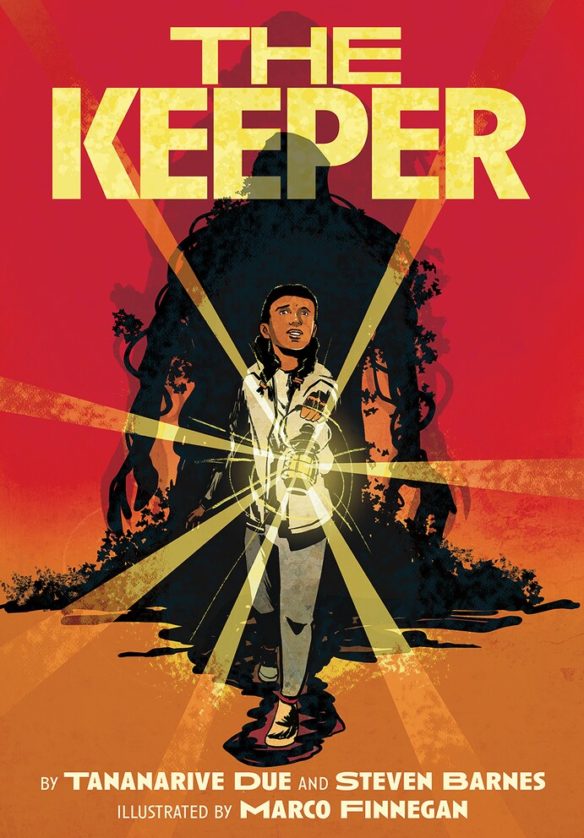(1) EVERYONE MAKES MONEY BUT THE ARTIST. “He Illustrated the ‘Harry Potter’ Cover for $650. It Just Sold for $1.92 Million” (unlocked). The New York Times asks the artist how he feels about it.
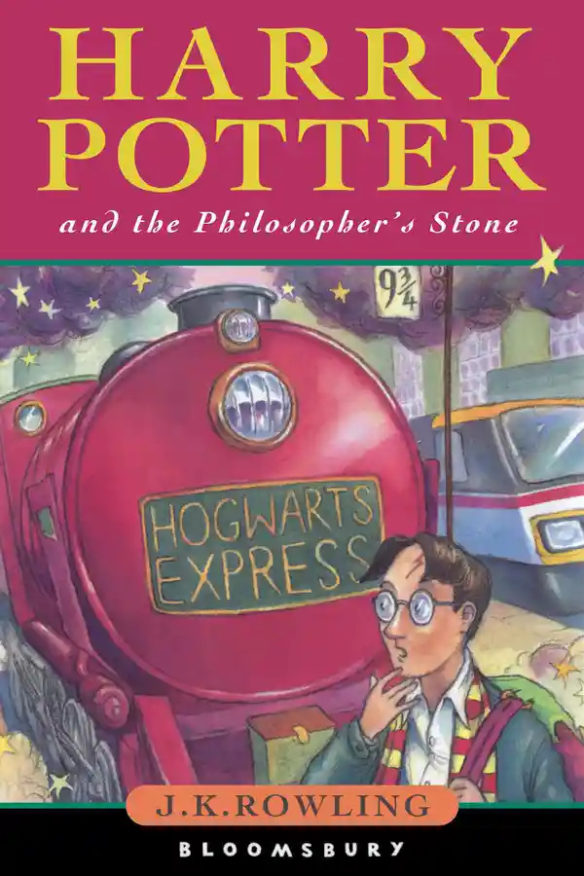
The original cover art for the first edition of “Harry Potter and the Philosopher’s Stone” sold for $1.92 million at auction on Wednesday, becoming the most expensive item related to the series, decades after its illustrator was paid a commission of just $650.
The watercolor painting, which depicts the young wizard Harry going to Hogwarts from Platform 9¾ at King’s Cross station, was part of the private library of an American book collector and surgeon, Dr. Rodney P. Swantko, whose other rare items were auctioned at Sotheby’s in New York this week.
The year before the novel came out in 1997, its publisher, Bloomsbury, hired a 23-year-old from England who had just graduated from art school to design the book jacket, the auction house said. The artist, Thomas Taylor, would go on to establish the world’s conception of Harry Potter, with his iconic round glasses and lightning bolt scar.
“It’s kind of staggering, really,” he said about the sale of his painting in an interview on Thursday. “It’s exciting to see it fought over.”…
(2) LIBICKI Q&A. The Comics Journal interviews “Miriam Libicki on VanCAF, bannings, and political protests”.
The saga of Miriam Libicki and the Vancouver Comic Art Festival began on Friday, May 31, with a message posted to the comic festival’s social media accounts. Libicki is an American-based cartoonist whose best-known works include Jobnik! and Toward a Hot Jew, both of which explore her time as a volunteer soldier in the Israeli Defense Forces after moving to Israel and obtaining dual citizenship in her 20s.
Libicki had, from VanCAF’s inception in 2012 up through 2022, been a fixture at the festival’s tables. But on the 31st, VanCAF announced via an unsigned public message that an unnamed “exhibitor” matching the description of Libicki and her works had received a lifetime ban from exhibiting at the convention. The statement apologized for this individual’s past attendance, on the grounds of “this exhibitor’s prior role in the Israeli military and their subsequent collection of works which recounts their personal position in said military and the illegal occupation of Palestine.”
The post, since removed, was termed an “accountability statement”…
… Rabiroff: So that takes us into the 2024 festival. Tell me what happened with that.
Libicki: So in 2024, because they had said apply again next year, the same day that applications were open, I applied with my new book that came out with the Holocaust survivor, David Schafer. And when acceptances were going out, they emailed me and they said, “We cannot offer you a space. Please let us know if you have any questions.” And right away I was like, “Yes, I do have a question. My question is why?” And then they didn’t get back to me for like a week. And then they said, “Well, we made this decision as a board, because there has been an incident, and there’ve been complaints. And also we want people with new work and you don’t have new work.”
So I got very upset at that because those reasons did not seem valid to me. Because number one, I did have new work. And number two, as far as I know, there was just the one incident, and that was an incident of people who hadn’t read the book. There were no substantive complaints about me, the content of my work, or my conduct at the festival. So it took a long time to get them to really respond. They kind of started to ignore my emails until I said in an email that you need to address this. If I don’t get a response from you, I am going to take actions to hold VanCAF accountable….
(3) ADD THIS HIDDEN GEM TO YOUR TBR. Self-Published Science Fiction Competition’s judging team ScienceFiction.news, led by rcade, reveals: “Our Hidden Gem for SPSFC 3 is Woe to the Victor”.

One of the traditions of the SPSFC is for judging teams to pick their hidden gem, a book that deserved to go further in the contest than it did. For the third SPSFC, which just concluded, our team is choosing Nathan H. Green’s Woe to the Victor as our gem.
Woe to the Victor was one of the two semifinalists selected by our team, but it did not advance to the finals — to our surprise. When we sampled all of the books in our initial allocation, we were high on this novel from the opening chapters.
Green’s a corporate lawyer in Canada putting his aerospace engineering degree to use on hard SF.
His book finds humanity on the eve of total annihilation. An invading fleet of Maaravi has completely wiped out the outer colonies and come to Earth for the finishing strike. This is not a fair fight. There’s nothing cocky or confident left in our protagonists. The fighter pilot Lewis Black knows that at best all he can accomplish is to buy a few extra minutes so that the humans chosen for colony ships might escape through a Vortex Generator and start over on distant planets to prolong the species. But like everyone else, Black lacks belief his mission will succeed….
(4) CON OR BUST WORLDCON GRANTS OFFERED. The Dream Foundry’s Con or Bust is making available grants for Palestinians to attend the Worldcon. Use the application at the link.
Are you a Palestinian or member of the Palestinian diaspora planning to go to Worldcon 2025 in Seattle? Would you be planning to go if you had funding covered? If so, applications for funding are now open. The preferred application window for applications is 27 June 2024 – 21 October 2024. Applicants who apply within this window will be considered together, and hear about their funding amounts in early November. Applications received outside this window will be considered on a first-come-first served basis for as long as funding remains.
We are also still accepting applications for attending the 2024 Worldcon in Glasgow. To apply for either, use the regular Con or Bust Application form and check the box to indicate that you qualify for grants from the Goldman Fund.
(5) NEW HOLE IN THE INTERNET. “Comedy Central, MTV News, CMT, TV Land Online Archives Purged By Paramount Global” reports Deadline.
In an enormous cultural loss reminiscent of the degaussed tapes incidents in the early days of television, Paramount Global has removed the online archives to ComedyCentral.com, TVLand.com, MTVNews.com, and CMT.com from public access.
The move takes away a quarter century or more of online content. It is unclear if the content has been saved for future use.
In a statement, a Paramount Global spokesperson said the takedowns came as part of a broader website strategy across Paramount. “We have introduced more streamlined versions of our sites, driving fans to Paramount+ to watch their favorite shows.”
The writers, editors and videographers on the sites were apparently given no warning of the changes, sparking outrage that their work has now vanished.
…The comedycentral.com website hosted clips from all episodes of The Daily Show since 1999, and bits of Stephen Colbert’s The Colbert Report, among other content.
A notice on Comedy Central’s website states, “While episodes of most Comedy Central series are no longer available on this website, you can watch Comedy Central through your TV provider. You can also sign up for Paramount+ to watch many seasons of Comedy Central shows.” A similar notice appears on TVLand.com….
The Wrap has more responses: “MTV News Writers Lament Site Shutdown: ‘Infuriating,’ ‘Beyond Depressing’”.
…Reaction was swift and strong: “Infuriating is too small a word,” former MTV News Music Editor Patrick Hosken said on X. He lamented, “Eight years of my life are gone without a trace. All because it didn’t fit some executives’ bottom line.”
Although he noted the existence of the Internet Archive, which has been documenting now-dead sites for decades, he wrote, “This is a huge loss not for just me (obviously) but for the dozens & dozens of hardworking people who built MTV News, who made it THE music news voice through the years.”…
(6) TEDDY HARVIA. The importance of an action figure being accurate increases when the subject is a demon!

(7) DÉJÀ VU ALL OVER AGAIN. Abigail Nussbaum discusses a “Recent Movie: I Saw the TV Glow” at Asking the Wrong Questions.
…For a certain kind of nerdy, pop culture-obsessed millennial, watching Jane Schoenbrun’s I Watched the TV Glow is an exercise in constant reference-spotting. The suburban setting, down whose late night, empty streets the emotionally-troubled Owen wanders, encountering strange figures and inexplicable occurrences, seems lifted straight out of Donnie Darko. The premise, in which teenagers in the 90s bond over their obsessive love for a quasi-fantastical, quasi-soapy television series that starts to make incursions into their reality, is familiar from Kelly Link’s novella “Magic for Beginners”. And, as any 90s nerd will sense the first time they see Isabel stride across the screen, ready for battle in a purple satin prom dress, the show-within-the-movie is a mirror of that pop culture stalwart, Buffy the Vampire Slayer. (Other references include The Adventures of Pete & Pete, and The Secret World of Alex Mack.)
The first hour of the movie sometimes feels like a game designed purely for people of my age and pop culture interests, constantly courting a feeling of recognition….
(8) MY LATE DUTCHESS. I recommend Karen Myers Mad Genius Club post “I don’t remember any of this…” about the challenge of reminding readers about series continuity.
One of the features of a long series in a created world is that you have room to build an elaborate and convincing place with a bunch of interesting characters.
One of the drawbacks is that the readers forget it all in each new entry, or are bored by having it explained to them all over again….
(9) TEACH YOUR LITERARY AGENT WELL. American Songwriter’s article about “Neil Young’s Sci-Fi Novel and His Hilarious Response About His Ongoing Project” was published just the other day, however, it relies heavily on a 2018 interview for quotes. But since it was news to me I ran with it…
The multi-talented folk rocker Neil Young’s sci-fi novel has been in the works since around 2017, and his commentary on the ongoing project is just what you’d expect from a musician who has made a career out of being unapologetically original and to the point….
“It’s a f***in’ mess,” Young admitted to Rolling Stone in 2018. “I have an agent in New York working with me on it right now. We’re just finishing it. It’s kind of a sci-fi thing about a guy who gets busted for a crime. He works for a power company, and there’s corruption in the power company, and he wants to expose it. So, he figures out a way to expose it and shuts down the grid a couple of times. He gets busted for doing that, and the cops come and take him out of his office, put him in a van, drug him, and he goes to a hospital somewhere. Then, he wakes up, and he’s on a mission to pay his debt to society. That’s all he cares about.”
Young elaborates on the more dystopian aspects of Canary, including glasses that broadcast someone’s real-time perspective to an authoritative group miles away and a new energy system that involves developing new animal species. (In typical sci-fi fashion, the animals escape, of course.) “It’s a long story,” Young adds.
(10) MEMORY LANE.
[Written by Cat Eldridge.]
June 27, 1986 — Labyrinth film. Much to my surprise, I had not written up Labyrinth which premiered thirty-eight years ago in the States on this date.
Just consider to begin with that it was directed by Jim Henson with George Lucas as executive producer. Now consider also that the film was a collaboration between Henson and Brian Froud following a similar undertaking on The Dark Crystal.
This was in the period when Lucas was taking a hiatus from directing but was credited as executive producer and sometimes story writer for such undertakings as Ewoks: Caravan of Courage, Ewoks: Battle for Endor, Willow, The Land Before Time, the Young Indiana Jones television prequel series and Howard the Duck to name some genre projects of his.
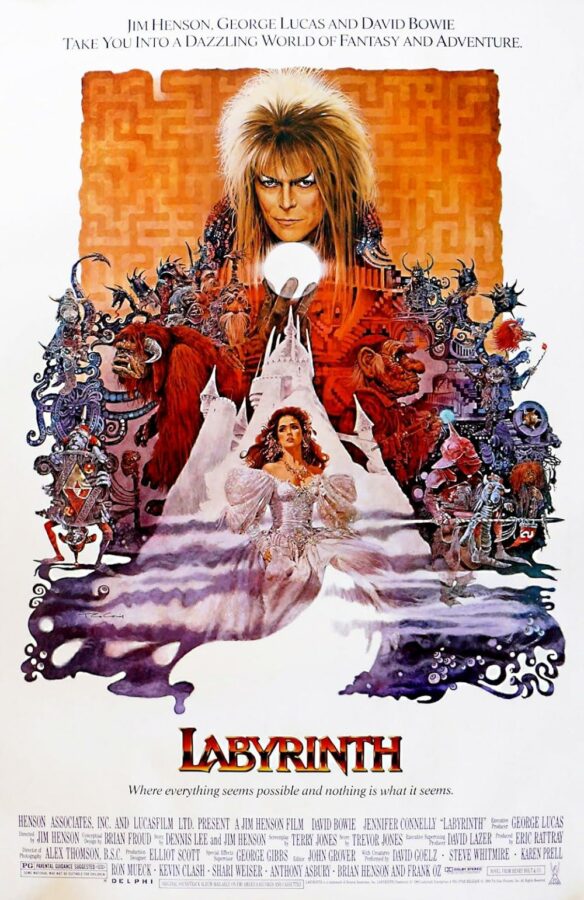
This would be the last film that Jim Henson was involved in as he died less than four years later.
The final principal player here was Brian Froud who had worked with The Dark Crystal four years earlier. If you’ve not seen it, go see it now. Though it was supposed to a children’s film, it was dark enough that the British film ratings board, the British Board of Film Classification, got more than its fair share of complaints about it. Oh those gelfs!
(Remember we’d later have the four pieces of art by Froud that Charles de Lint, Midori Snyder, Patricia McKillip and Terri Windling were supposed to base entire novels on.)
So we have the principal players, now we need a writer, don’t? How about Terry Jones of Monty Pythons fame, will he do? So he wrote primarily the first draft of a script off Froud’s sketches rather than earlier material that he had.
Well that screenplay didn’t survive contact with the meat grinder of producing a film. We know from later stories written about the making of this film that, at a very minimum, Dennis Lee, George Lucas, Laura Phillips and Elaine May were responsible for the final script. None got credited as only Jones was listed in the end.
The puppetry for Labyrinth, as it was in Dark Crystal, is the work of Froud. It’s definitely lighter in tone I feel than Dark Crystal was and the puppets here reflect that. The gelfs in Dark Crystal were the stuff nightmares were woven out of. I don’t think there’s really any darkness here at all which is reflected in it being rated a children’s film. Yes, it was, and the British Board of Film Classification at the time received virtually no complaints.
Henson in news stories noted that Jim Henson’s Creature Shop had been building the puppets and characters required for around a year and a half, prior to shooting, but that it really only came together in the last few months. It was a tremendously complicated undertaking he said. Some of the puppets needed as much as five puppeteers, and the voice work was difficult as it didn’t come out of the mouth but elsewhere.
Now there was the cast. They needed a fourteen-year-old girl, a properly English lass. But instead they chose an American why so? Henson says why in the actual production dairy, so let’s have it explain the decision…
“Selecting the actress who could play the role of Sarah was one of Henson’s first major decisions. He auditioned hundreds of applicants before selecting JENNIFER CONNELLY. “I wanted a girl who looked and could act that kind of dawn-twilight time between childhood and womanhood,” Henson says. “And Jennifer was perfect. It was even more incredible that she was the same age as Sarah was intended in the script.”
So now let’s consider the Goblin King. There was no else consider for the as the film dairy says
From the very beginning, director Jim Henson envisioned Bowie as the lead of this major new fantasy film production. “Way back when we first started working on the story, we came up with this idea of a Goblin King,” Henson explains. “And then we thought; ‘Wouldn’t it be wonderful to have music and someone who can sing?’ David was our first choice from the very beginning. And he liked the idea. So the whole thing was really written with him in mind.”
And Bowie was equally enthusiastic
What attracted Bowie to the role? “Jim gave me the script, which I found very amusing,” he says. “It’s by Terry Jones, of Monty Python, and it has that kind of slightly inane insanity running through it. When I read the script and saw that Jim wanted to put music to it, it just felt as though it could be a really nice, funny thing to do.”
So we’ve got the King, we’ve the girl he’s enamored with, so who else do we need? Seriously that’s the film’s story. There are three other human characters — Toby Froud as Toby Williams, Sarah’s half-brother, Shelley Thompson who plays Irene Williams, Sarah’s stepmother and finally Christopher Malcolm as Robert Williams, Sarah’s father. But the story here is very much just between the Goblin King and Sarah. Or at least that’s my interpretation. )
I like it, I think it’s a lovely story. And no I’ve not watched the new series as I see absolutely no reason to do so. I like my memories unsullied by revisions, by expansions.
So how did it do? Not well here. Maybe it’s just too British. It did do exceptionally well on its home shores so it made thirty-nine against twenty-four million in production expenses, and has done extremely well in television rights, cassette and now DVD sales, and it’s streaming free right now on Peacock as is the Dark Crystal and The Storyteller. I really, really love that series. That dog seems real.
Now for those critics I’d say this review by Joss Winning of the Radio Times sums up the feeling of the vast majority of critics both in Britain and here: “More traditionally structured than Henson’s previous fantasy outing, The Dark Crystal, yet sharing its mysticism-meets-Muppets DNA, Labyrinth is a wholly unique dark fairy tale that enchants from start to finish.”
Audience reviewers at Rotten Tomatoes currently give it a seventy-seven percent rating, a most excellent one I’d say.
(11) COMICS SECTION.
- Cornered knows these are the rules we must follow.
- The Argyle Sweater says this is marketing 50 years later.
(12) SHE WAS ALSO A LASFSIAN. [Item by Steven French.] “Who Was ‘Lisa Ben,’ the Woman Behind the U.S.’s First Lesbian Magazine?” is an interesting article in The Smithsonian on Edyth D. Eyde who as “Lisa Ben” published the first lesbian magazine in the US but which makes no mention of the fact that as “Tigrina” she was active in SFF fandom, remaining friends with Forrest J Ackerman for many years (she is featured as The Lesbian Pioneer in Rob Hansen’s Beyond Fandom: Fans, Culture and Politics in the 20th Century, available here.
In the summer of 1947, Edythe Eyde, a secretarial assistant at RKO Pictures in Los Angeles, started covertly publishing a tiny journal she called Vice Versa, subtitled “America’s Gayest Magazine.”
Now recognized as the first lesbian magazine in the United States, Vice Versa appeared at a time when sodomy laws banning “unnatural sexual acts” criminalized same-sex activity across much of the country. To protect her safety and livelihood, Eyde—who later adopted the pen name Lisa Ben, which doubled as an anagram for “lesbian”—published her magazine anonymously….
…The free, rather plain publication featured no bylines, no photos, no ads and no masthead. It had a blue cover and consisted of typed pages stapled together. Eyde passed it around to friends, who then passed the copies on to other friends. She also mailed copies to a small number of people and gave out issues at gay bars. Overall, Vice Versa probably had no more than 100 readers, Faderman says…
(13) DON’T SPILL THAT BLOOD! Gizmodo has been reading the trade papers and learned “Vampire Hunter Van Helsing to Lead CBS’ Latest Crime Show”.
…Deadline reports that CBS’s latest addition to its wild collection of procedural crime shows is Van Helsing. Yes, everyone’s favorite vampire hunter is coming to CBS. This version, however, will be “a contemporary take on the monster hunter Dr. Abraham Van Helsing, who uses his uniquely inquisitive mind working alongside his ex, relentless FBI special agent Mina Harker, to solve New York City’s most harrowing cases.”
Do those “harrowing cases” involve vampires and other monsters? They damn well better! Otherwise, why the heck make a Van Helsing show? Syfy had pretty solid success with the property from 2016 to 2021, after all. And who can forget the 2004 Hugh Jackman movie with Kate Beckinsale—besides everyone, forever and always?…
(14) WHERE TO LOOK FOR THE DAMAGE. Nature says, “Misinformation Might Sway Elections – But Not in the Way That You Think”.
…Although the problem is undoubtedly real, the true impact of misinformation in elections is less clear. Some researchers say the claimed risks to democracy posed by misinformation are overblown. “I think there’s a lot of moral panic, if you will, about misinformation,” says Erik Nisbet, a communications and policy researcher at Northwestern University in Evanston, Illinois. A body of research suggests that it is notoriously difficult to persuade people to change their vote, for example. It’s also far from clear how any one message — true or false — can penetrate amid the media chaos.
Still, as others point out, misinformation does not have to change minds about politics to have an impact. It can, for example, mislead people about when and where to vote, or even whether they should do so at all. Furthermore, just knowing that misinformation is out there — and believing it is influential — is enough for many people to lose faith and trust in robust systems, from science and health care to fair elections.
And even if misinformation affects only small numbers of people, if it drives them to action, then that too can have an amplified impact. “We might not expect widespread effects across the whole population, but it might have some radicalizing effects on tiny groups of people who can do a lot of harm,” says Gregory Eady, a political scientist at the University of Copenhagen, who studies the effects of social media…
(15) DO WE REALLY NEED TO ASK? Marissa Doyle asks “Was Waterloo Necessary?” at Book View Café.
…In 2015 British biographer Andrew Roberts published an enormous and quite readable biography of Napoleon. In it he wonders if the Battle of Waterloo was really necessary. Roberts argues that after returning to France from temporary exile in Elba, Napoleon had changed.
He was now in his mid-forties and beginning to feel his age and the years of hard campaigning, and according to a letter sent to the Allied governments still meeting at the Congress of Vienna, had given up on reconstituting his empire and simply wanted to concentrate on continuing his reforms and modernizations within France. He set about instituting a new constitution which included something approximating a legislature, and started in on further building projects in Paris and reopening several cultural institutions that Louis XVIII had closed during his brief return to the throne….
(16) SF’S FUTURE OF PAST WARFARE. [Item by SF Concatenation’s Jonathan Cowie.] It is said that today’s science fiction is tomorrow’s science fact. Of course, SF is not in the prediction business: it has far more misses than hits. Yet, load a blunderbuss full of a hodgepodge of SFnal concepts and fire it at a barn, and a few will inevitably hit the door.
And so we come to a recent YouTube post by Grammaticus Books. His 8-minute video notes that despite some stonkingly brilliant novels (Heinlein, Haldeman and even a novel by an author whose name does not begin with an ‘H’) when it comes to warfare prediction many military SF books get it wrong.
However, Grammaticus has found one SF novel that seems to have hit the mark when it comes to the future of warfare: Fred Saberhagen’s series of Berserker Wars (from 1967). It is a bleak, dark vision with artificial intelligence, drones and even coordinated fleets of A.I. drones on the modern battlefield. Grammaticus says that you could see this in Syria in 2015/6 and now today in Ukraine with individual drones hunting down human soldiers. He envisions that soon we will be seeing autonomous A.I. controlled drones because they can react faster than a human.
However, he comes with a caveat in the form of a 1965 classic novel…
[Thanks to Teddy Harvia, Kathy Sullivan, Mike Kennedy, Andrew Porter, John King Tarpinian, Chris Barkley, Cat Eldridge, SF Concatenation’s Jonathan Cowie, and Steven French for some of these stories. Title credit belongs to File 770 contributing editor of the day Cat Eldridge.]



